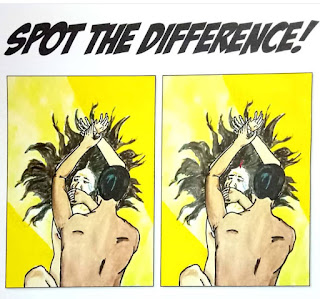Mitakshara and its Application in the 21st Century
 |
| Pc- Pinterest |
Mitakshara and Dayabhaga are the two principal schools of Hindu Law. These schools are based on different interpretations of the Yanjyavalkya Smriti. There are a few differences regarding adoption and inheritance while interpreting the Yajnyavalkya Smriti, which have occurred due to the prevalence of diverse cultures and traditions in different parts of India. Smritis consist of the words of rishis who had drafted the provisions of the Hindu Law[1]. But these rishis were not the actual lawmakers[2] because they had drafted these Smritis based only on the divine revelations which they had received. These divine revelations are compiled in the Shrutis. Shrutis consist of the Vedas[3] and ancient Hindu law is rooted in these Vedas. Shrutis are the texts that constitute actual utterings and wordings of the revelations made by the divine powers.
MITAKSHARA SCHOOL OF HINDU
LAW:
As
stated earlier, Mitakshara is a
commentary on Yajnyavalkya Smriti[4]
written by Vijnyaneshwar. Yajnyavalkya divides it into three
sections:
1. Achara:
Proper conduct
2. Vyavahara:
Civil Laws
3. Prasyaschitta:
Religious observance and redemption
The vyavahara section contains forensic
laws and their practices, as well as rules for private acts and disputes. This
section is the primary concern of this article. Mitakshara prevails all over India, except in Bengal, some part of Assam,
Bihar and Orissa. Considering the huge territory of India and the varied
customs and traditions, there further appeared subdivisions in the school of Mitakshara:
I.
Benaras School
II.
Mithila School
III.
Bombay School (also known as Maharashtra
School/Mayukha School/School of Western India)
IV.
Dravida school (also known as Madras
School)
The
application of these schools is region-wise. All of these schools have
different customs and traditions, and they have their own set of authorities
only for the purpose of recognising these customs and traditions; otherwise they
still consider Mitakshara as their
paramount authority, whenever and wherever any confusion arises.
Some
of these schools have remained static by adopting the literal meaning of the
parental text, while others have modernised the provisions in accordance with the
requirements of the society and its prevailing ethos. As a result, schools such
as Benaras School are often considered as orthodox schools, while Bombay School
is considered as the most liberal school.
THE COPARCENARY SYSTEM:
In
addition to adoption, Mitakshara also
discusses inheritance laws. While doing so, it advocates ‘The Coparcenary
system’. The word ‘Coparcener’ is a blending of two words- ‘co’ and ‘parcener’. ‘Co’ means together
while ‘parcener’ has a Latin origin,
meaning a person sharing inherited property. Collectively thus, the word
‘Coparcener’ means sharing the rights over inherited property i.e. joint heir-ship.
Under
the coparcenary system, three lineal male descendants[5] from the propositus are recognised
and are deemed to be eligible for acquiring the rights over inherited property.
Propositus is the person who is at the top of the lineal descent. For example –
A is holding the property, B is his son, C is his grandson, D is his great-grandson
and E is his great-great-grandson. Here, A is a propositus, and B, C, D are
consecutive lineal descendants, E can only claim the rights over inherited
property when one of these lineal ascendant dies. Only a coparcener has a right
to demand partition of the property.
Under
the coparcenary system, there is no unity of ownership of coparcenary property
with the members thereof; every member is the sole owner of his share. However,
there is a unity of possession.[6] This means one member of
the system cannot sell his share without partition and without the consent of the
other members in the coparcenary system.[7] Mere determination of
share does not bring about the final partition.
THE HINDU SUCCESSION
(AMENDMENT) ACT, 2005:
The
Hindu Succession (Amendment) Act, 2005 (Hereinafter referred to as HSA, 2005) was
introduced as an attempt to bridge the gap between the conservatives who wanted
to retain the Mitakshara law in its
literal text, and the progressives who wanted its modification with women being
recognised in the line of descent under coparcenary system. The HAS, 2005 amended
section 6 of the concerned Act by declaring that, the daughter of a coparcener
in a joint family governed by the Mitakshara law shall, on and from the date of
commencement of the Hindu Succession Act, 2005 (September 9, 2005), by birth
become a coparcener in her own right and, in the same manner as a son. This Act
also recognised the daughter’s rights over dwelling house, irrespective of
whether she is unmarried, deserted or widowed.[8]
Later
on, various High Courts and their judgments highlighted different interpretations
of the said Act and posed certain questions:
1. Whether
the Act is of retrospective nature,
i.e. can daughters born before 2005, claim the rights over coparcenary property
on the basis of the term “by birth”?
2. Whether
the property can be claimed by a daughter if her father is not alive as on September 9, 2005?
3. Can
a daughter reclaim her rights in accordance with the said Act, even if the partition has already happened?
While
the first question remains partially unanswered, with respect to the second and
the third question, various High Courts had earlier ruled that if the father is
not alive as on September 9, 2005, a daughter cannot claim the rights over
inherited property. This interpretation was also upheld by the Supreme Court
and subsequently it became the law of the land. It was ruled in Prakash v Phulvati[9] that fathers must be alive
for daughters to claim succession rights.
Now even though the dust over the issue was
very much settled, it was still important to analyse what caused the Supreme Court
to modify its previous verdict and reinterpret the words from the Act, in the
recent judgment of Vineeta Sharma v. Rakesh Sharma (2020). In the aforesaid
judgment[10],
Supreme Court ruled that, if the Act itself says ‘by birth’ then there is no
need for answering the question of whether the father is alive or not on the
date of commencement of the Act. By depriving daughters of their rights over ancestral
property, we are indulging into gender discrimination and going against the constitutionally
envisaged goal of gender justice.
The
Court also quoted a common saying-
“A son
is a son until he gets a wife. A daughter is a daughter throughout her life”[11].
Therefore,
finally the Court overruled its previous judgment in Prakash v Phulwati[12] and highlighted that it
has to be taken in a literal sense that daughters are to be treated as a
coparcener in the same manner as that of sons.
Now
answering the first and third question, the Supreme Court ruled that the Act
cannot be said to be of retrospective nature, because by inserting the clause
stating that daughters cannot claim their rights over inherited property where the
partition which got crystallised before December 20, 2004, it clearly implies
that the legislature did not intend to disturb the rights that have already
been conferred and crystallised. But yes, the Act would apply in situations
where there is no partition, even though it is before the December 20, 2004.
Thus,
in a sense it is more retroactive
than retrospective, as it does not disturb the partitions and rights already
conferred in accordance with the pre-existing laws. The Court also made a
notable point where it defined what partition exactly would be. Mere
preliminary decree which determines shares does not bring about the final
partition. For, while the final decree is pending, the shares themselves are
liable to be changed on account of the intervening events. Therefore, unless the
partition of the property is affected by metes and bounds, daughters cannot be deprived
of the benefits conferred by this Act. [13]
Even
though the Courts and the Act have made it a point to recognise the rights of
daughter from a constitutional point of view, and tried to terminate the gender
discrimination, it would be curious to find out, as to what extent the verdict
and the amended Act actually reflects its practical application, keeping in
mind the patriarchal ethos of the Indian society.
By
Harshal
Kshirsagar
III
B.A. LL.B.
ILS
Law College, Pune.
[1]
Smritis are also referred to as ‘institutes’
or ‘codes’.
[2] Smritiskars claim themselves to be the exponents of the divine
precepts enshrined in the Shrutis.
[3] Shrutis consists of four Vedas: Rugveda,
Yajurveda, Samveda, Atharvaveda and
each one is divided into three parts i.e. Sanhita
which means praise of god, Brahmana
meaning duties and means of performing duties and at last, Upanishad which means rationale behind those duties.
[4] Yajnyavalkya is one of the 32 Smritis
in Hindu Law. Padma Puran, written by
Maharishi Vyas, mentions 36 Smritis-
18 Major Smritis and 18 Minor Smritis. Each Smriti is named after its author. Manu, Atri, Vishnu, Harita, Yajnyavalkya, Angira, Yama, Apasthamba, Samvrata, Katyayan, Brihaspati, Parashara, Vyasa, Sankha, Likhita, Daksha, Gotama, Satapata, Vashishtha are the 18 major Smritis.
[5]
Sunil Kumar and Anr. v. Ram
Prakash and Ors., (1988) 2 SCC 77.
[6] State of Maharashtra v Narayanrao
Shamrao Deshmukh and Ors., (1985) 2 SCC 32.
[7] Controller of Estate Duty v.
Alladi Kuppuswamy, (1977) 3 SCC 385.
It is settled proposition of Mitakshara law that
without partition, nor joint partition nor specific property can be disrupted
by any alienation of coparcener. In Benaras School, there is a prohibition on
the sale of property without the consent of other coparceners.
[8]
S. 23 of Hindu Succession (Amendment)
Act, 2005.
[9] Prakash v. Phulvati, Civil Appeal
No. 7217 of 2013.
[10] Vineeta Sharma v. Rakesh Sharma
and Ors., Diary No. 32601 of 2018.
[11] Savita Samvedi (Ms) and Anr. v.
Union of India and Ors., 1996 (2) SCC 380, para 50.
[12]
Supra at 5.
[13] S. Sai Reddy v. S. Narayana Reddy
and Ors, (1991) 3 SCC 647.



Comments
Post a Comment